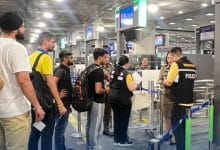Aviation industry estimates that 25 million jobs are in peril

Amongst industries hit during the Covid-19 situation, the aviation industry has probably been hit harder than most with huge investments, millions of staff, complicated infrastructure, small margins and thousands of down-stream businesses. It will also take a lot longer to wind the whole aviation machine back up when things eventually settle down.
The International Air Transport Association estimates that some 25 million jobs are at risk due to the impact Covid-19 is having on the industry. It reports that the livelihoods of some 65.5 million people. dependent on the aviation industry, including sectors such as travel and tourism, are also at peril. Among these are 2.7 million airlines jobs.
In a bleak scenario, assuming travel restrictions could last for three months, the IATA report estimates that 25 million jobs in aviation and related sectors are endangered …
• 11.2 million jobs in Asia-Pacific
• 5.6 million jobs in Europe
• 2.9 million jobs in Latin America
• 2.0 million jobs in North America
• 2.0 million jobs in Africa
• 0.9 million jobs in the Middle East
Airlines could also expect to see full-year passenger revenues fall by US$252 billion, a whopping 44% drop for 2020, compared to 2019. It’s also estimated that world airlines have burned through US$61 billion in cash during the past three months, limping along as countries close borders and airports shut down.
Airlines are now calling on governments for critical financial aid to help airlines to remain viable businesses. Clearly, whenever planes start taking to the sky again, there will be some brands missing who were unable to survive the financial impact of the industry collapse.
IATA is calling on governments to support local airlines with…
• Direct financial support
• Loans, loan guarantees and support for the corporate bond market
• Tax relief
Alongside vital financial relief, the industry will also need careful planning and coordination to ensure that airlines are ready when the pandemic is contained. It will be complicated. At the practical level airlines will need contingencies for licenses and certifications that have expired.
Planes, sitting gathering dust for months on end will need critical maintenance and testing before returning to service.
At the root of the industry’s problems is that airlines have been such a vital part of the contagion’s ability to spread. The popularity of plentiful, cheap, airfares, linking the world, has provided the perfect environment for the virus to spread. All those people waiting in queues, cooped up in a plane for hours creating the same air, sitting inches away from each other.
The industry will have to find a more predictable and efficient approach to managing travel restrictions which need to be lifted before we can get back to work. And there won’t be a single day when the shutdown is magically lifted and all airlines leap back into the sky. It will be a lumpy lurch back into service as countries, one by one, start re-opening airports and borders.
These are just some of the major tasks that are ahead of us. And to be successful, industry and government must be aligned and working together,” according to director general and CEO Alexandre de Juniac.
“We ended up with a mess of measures that we are still sorting out today. The 25 million people whose jobs are at risk by this crisis will depend on an efficient re-start of the industry.”
Latest Thailand News
Follow The Thaiger on Google News:


























